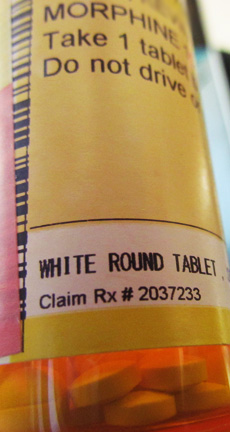 With opioid painkiller addiction now at epidemic levels, the CDC has finally issued new guidelines for primary care doctors:
With opioid painkiller addiction now at epidemic levels, the CDC has finally issued new guidelines for primary care doctors:
The guidelines recommend what many addiction experts have long called for — that doctors first try ibuprofen and aspirin to treat pain, and that opioid treatment for short-term pain last for three days, and rarely longer than seven. That is far less than current practice, in which patients are often given two weeks or a month worth of pills.
The guidelines are meant for primary care doctors, who prescribe about half of all opioids but often have little training in how to use them. They call for patients to be urine tested before getting prescriptions and for doctors to check prescription drug tracking systems to make sure patients are not secretly getting medicine somewhere else. Currently, 49 states have such systems, but only 16 require that doctors use them, according to experts at Brandeis University.
It’s worth noting that the actual text of the guidelines makes it very clear that they’re aimed at chronic pain sufferers. There are 12 recommendations, and only one addresses acute pain:
Long-term opioid use often begins with treatment of acute pain. When opioids are used for acute pain, clinicians should prescribe the lowest effective dose of immediate-release opioids and should prescribe no greater quantity than needed for the expected duration of pain severe enough to require opioids. Three days or less will often be sufficient; more than seven days will rarely be needed.
This sounds like sensible advice. In the past, opioid painkillers were reserved for very serious acute pain (post-op, for example), but that’s changed over the past few decades. A lot of kids grow up today expecting powerful painkillers for things like sprained ankles, which just aren’t all that painful. Is this because doctors have changed their habits? Because parents are more demanding? I don’t know. But it probably doesn’t make sense. If you sprain your ankle, ice it down and take some aspirin. You’ll live through it.
Beyond that, there are obviously cases where acute pain can last longer than seven days. When I broke a bone in my back, I took morphine on and off for a couple of months. But I’m naturally skeptical of opioid painkillers, and my doctor had to talk me into taking more pills, not fewer. I can easily imagine someone with a different attitude who’s determined to rid themselves of any pain whatsoever and gobbling down more pills than they should.
As usual with laws and guidelines, the actions of a modest number of abusers is likely to make life more annoying for everyone else. Hopefully, doctors will take these rules seriously, but will still be allowed to use their common sense to decide when the rules need to be bent.













